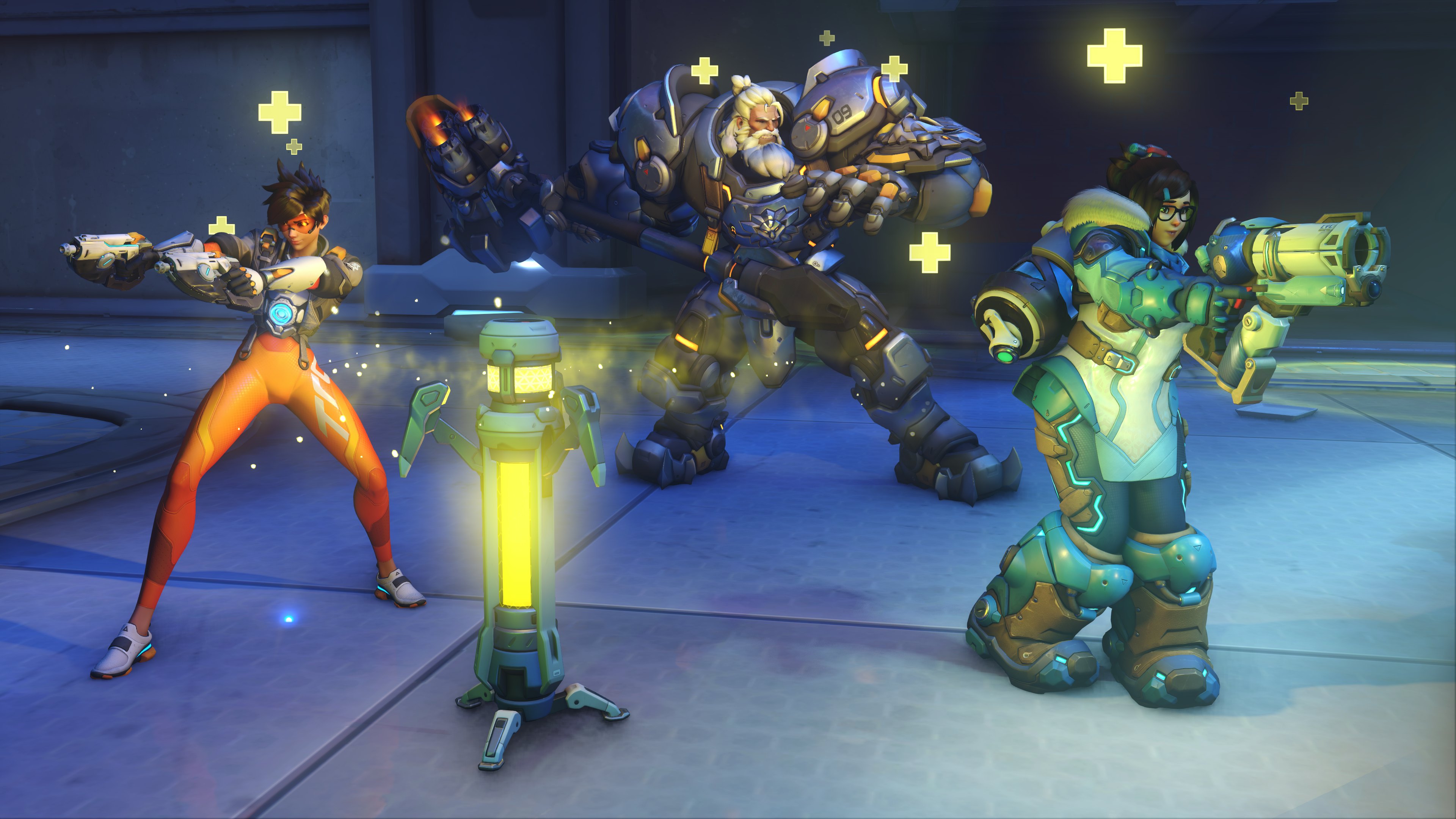
Overwatch 2 players who’ve been around since the first game have had a lot of changes to deal with over the years, and the launch of the sequel unleashed many of them all at once. Before launch, it seemed every announcement from Blizzard on Overwatch 2 heralded a contentious, disappointing, or just baffling change coming to the game, to the point that some players wondered if they’d be better off without a sequel at all. But a small improvement to Overwatch 2’s scoreboard made during the pre-launch beta is one of the best changes Blizzard has ever made. It has everything to do with damage mitigation.
What is mitigated damage in Overwatch 2?
As detailed in the June 28 patch notes, Overwatch 2’s scoreboard added a new stat: MIT or Damage Mitigated. It takes the place of the old Damage Blocked statistic but adds more info about who’s actually keeping the team from getting hurt. Damage Blocked only counted damage absorbed by player-created shields, but Damage Mitigated also tracks damage avoided by using abilities that reduce damage taken without negating it completely.

The MIT stat is a nice way to track contributions outside of sheer damage, but another Overwatch 2 feature makes it even more important. The best way to level up the game’s battle pass and earn seasonal rewards is by completing challenges. There are a lot of challenges in the game, but some players are confused by those that task them with mitigating damage since the language in the game isn’t entirely clear about what counts.
Overwatch 2 MIT abilities
Fortunately, completing the challenge isn’t too difficult if you know what you’re actually meant to do. Tracking your MIT stat is a good way to gauge your progress in a given match, and picking the right hero for the job is essential. Blizzard specifically called out Orisa’s Fortify and Ana’s Nano Boost abilities in the blog post announcing the change, but any ability that keeps you from taking damage to your main health pool counts. That means shields, damage reduction, and even temporary health will increase your MIT.
Here’s every damage mitigation ability in Overwatch 2 right now:
Ana
- Nano Boost: Increases an ally’s damage, while reducing damage taken.
Bastion
- Ironclad: Reduces damage taken while transformed.
Brigitte
- Barrier Shield: Hold right-click to deploy a frontal energy barrier.
D.Va
- Defense Matrix: Block projectiles in an area in front of you.
Doomfist
- Power Block: Protect yourself from frontal attacks.
Genji
- Deflect: Deflect incoming projectiles towards the direction you are aiming and block melee attacks.
Junker Queen
- Commanding Shout: Grants temporary health and movement speed to yourself and allies.
Lucio
- Sound Barrier: Create temporary extra health for nearby allies.
Orisa
- Fortify: Gain temporary health, reducing all damage taken and becoming unstoppable.
Reinhardt
- Barrier Field: Hold right-click to deploy a frontal energy barrier.
Roadhog
- Take a Breather: Heal yourself and reduce damage taken over a short time.
Sigma
- Kinetic Grasp: Absorb projectiles in front of you and convert them into shields.
- Experimental Barrier: Hold to propel a floating barrier.
Torbjorn
- Overload: Gain additional extra health as well as improved attack, movement, and reload speed.
Winston
- Barrier Projector: Deploy a protective energy dome.
Zarya
- Particle Barrier: Create a damage barrier around you.
- Projected Barrier: Create a damage barrier around an ally.
What the MIT change means
The scoreboard itself was a matter of controversy. The original Overwatch didn’t have a traditional scoreboard as you’d find in most first-person shooters. It only called out top performers by name, awarding medals after a match to the players who got the most objective kills, did the most healing, or stayed on objective longest.
Overwatch 2 uses a more traditional scoreboard which appears after the match and can be viewed while the game is ongoing. This scoreboard tracks and displays damage, healing, kills, deaths, and assists done by each member of both teams. A lot of players cried foul when it debuted in the beta. While detailed scoreboards can help serious players track how they're doing compared to the competition, they can be a nightmare for more casual — or simply less stat-focused — players.

A more informative scoreboard may sound benign in principle, but in practice, it can be a conduit for toxic behavior. Players who rack up too many deaths or don’t contribute as much as others could be singled out for harassment by sweaty teammates and opponents alike.
When the original Overwatch launched without a typical scoreboard, players immediately assumed it was meant to address precisely that issue. Community consensus was that Blizzard was trying to eliminate toxicity by hiding stats that can lead to abuse in other shooters, like the all-important kill/death ratio. In a 2016 interview with Gamespot, former director Jeff Kaplan said it actually served another purpose:
“We basically stopped displaying any form of scores, kills, deaths because it really wasn't telling the story of who was doing their job properly to win or lose as a team.”
Kaplan did say the argument that scoreboards breed toxicity may have some merit, but it wasn’t the team’s primary motivation for not using one. For a lot of players, Kaplan’s departure from Blizzard in 2021 was seen as a sign the times were changing. The more time goes on, the more it seems they may have been right.
Battling toxicity may not have been Blizzard’s main reason for leaving out a traditional scoreboard, but players certainly felt it had that effect. For a while, at least.

One of the best things about the early days of Overwatch was how it let players who don’t normally like shooters in on the fun. Characters like Mercy didn’t require twitch aiming skills to play successfully, instead rewarding qualities like quick decision-making and smart movement. For years, players have lamented how much that’s changed, and many placed the blame on Blizzard prioritizing the competitive and pro scene over people just playing to have fun.
Blizzard has never come out and said it’s catering to pros now, but Overwatch 2’s revamped scoreboard looks like one more piece in a mountain of evidence that that’s the case. Either way, the MIT stat could signal an attempt to bring back some small amount of Overwatch’s core design, favoring solid teamwork over flashy, aggressive play. While it’s not much, Overwatch 2 players longing for the feel of the original game can at least look to the scoreboard as one positive change.



!["[T]he First and Fifth Amendments Require ICE to Provide Information About the Whereabouts of a Detained Person"](https://images.inkl.com/s3/publisher/cover/212/reason-cover.png?w=600)



